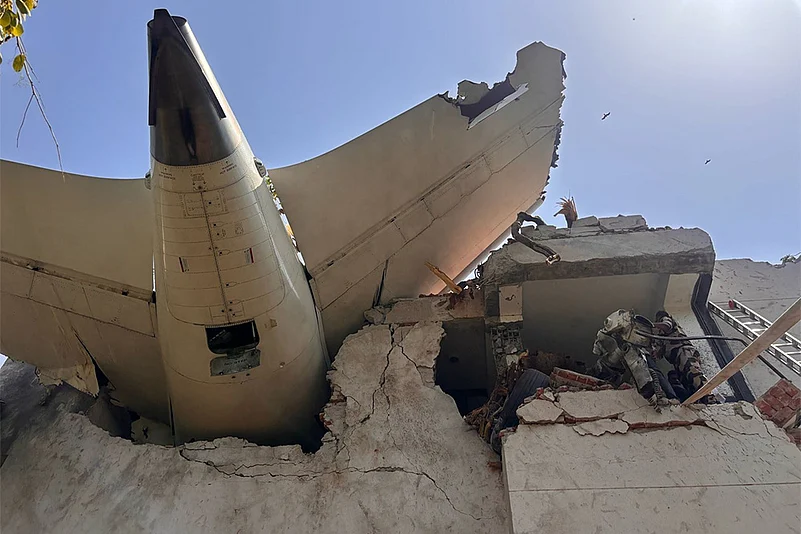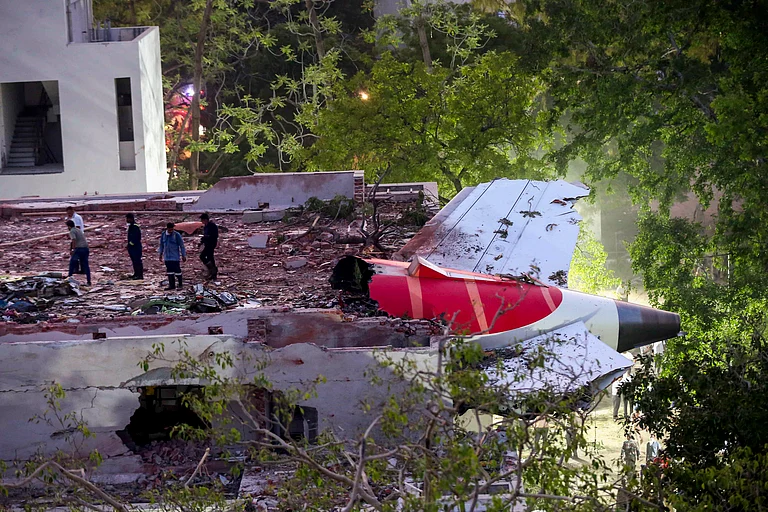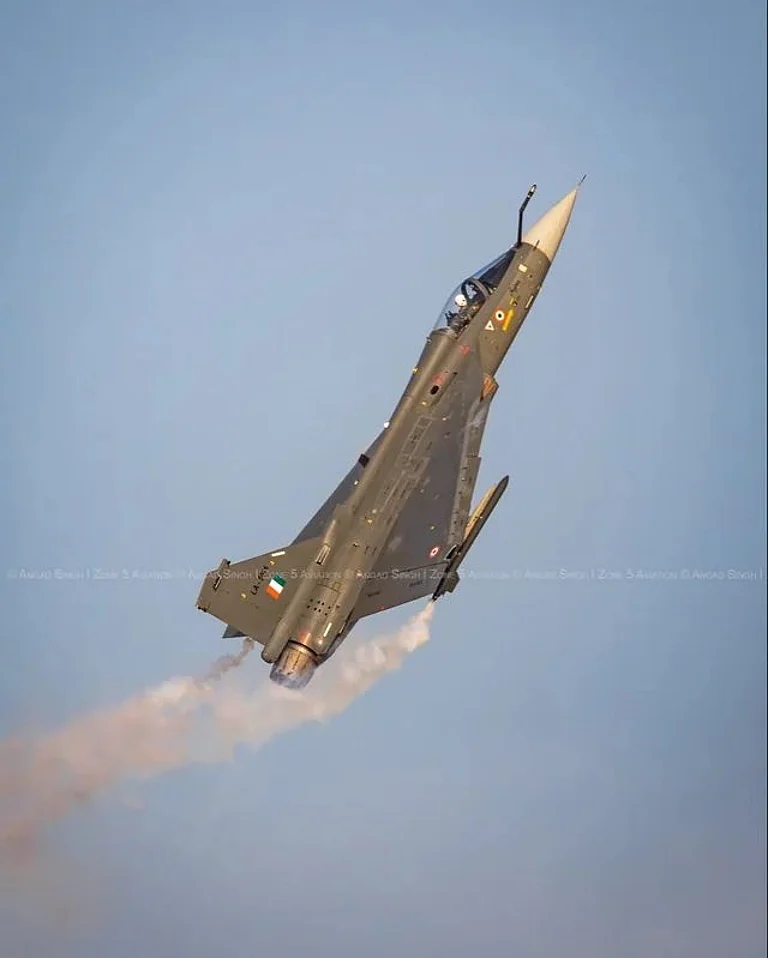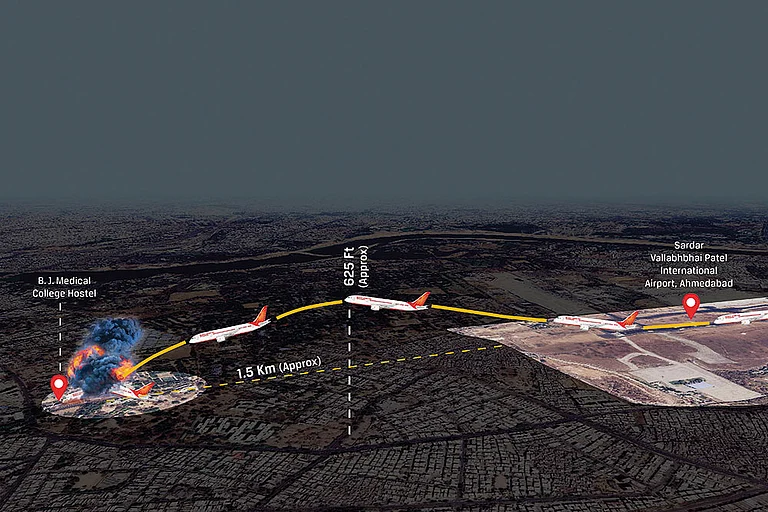On 12 June 2025, Air India Flight AI171, a Boeing 787-8 Dreamliner (VT-ANB), crashed shortly after takeoff from Ahmedabad, killing all 260 people on board. The preliminary report, issued by the Aircraft Accident Investigation Bureau (AAIB) of India in compliance with ICAO Annex 13 requirements, provides a factual account of the sequence of events but raises several technical and procedural concerns due to its lack of depth, clarity, and actionable insight.
According to the report, the aircraft lifted off at 08:08:39 UTC. At 08:08:42 UTC, while accelerating through 180 knots and at approximately 50 feet above ground level, fuel control switches transitioned from RUN to CUTOFF within one second, resulting in a dual-engine shutdown. The aircraft began gliding immediately, and though the pilots attempted to return the switches to RUN ten seconds later, the loss of altitude and airspeed by that point was irreversible. The aircraft crashed 1.67 km beyond the runway perimeter and was engulfed in flames at 08:09:11 UTC.
The Cockpit Voice Recorder (CVR) captured a moment of confusion in the cockpit:
One pilot asked: “Why did you cut off?”
The other responded: “I didn’t do it.”
This exchange indicates that the engine shutdowns were uncommanded. However, the report does not identify the cause—whether it was crew error, mechanical malfunction, or electronic failure.
The Boeing 787 uses spring-loaded locking mechanisms on its fuel control switches to prevent accidental movement. The switches installed on VT-ANB (Part No. 4TL837-3D) were referenced in FAA SAIB NM-18-33 (2018), which warned that these switches might be installed with the locking feature disengaged, making them susceptible to unintended movement due to vibration, contact, or quadrant flex. Although this advisory is cited in the report, no recommendation for fleet-wide inspections or corrective action is offered.
Another crucial element is the aircraft’s emergency systems. The Ram Air Turbine (RAT), which deploys automatically when both engines fail and power drops below a threshold, was observed as deployed in CCTV footage when the aircraft was approximately 60 feet above ground level. This suggests that the dual engine failure likely occurred before the official timestamp of 08:08:42 UTC, implying a possible discrepancy between the visual evidence and the flight data timeline. RAT deployment logic on the Boeing 787 typically involves a detection and activation delay of about 2–3 seconds, further supporting the hypothesis that the failure began earlier than reported.
The survivability of the flight recorders also raises concern. The rear Enhanced Airborne Flight Recorder (EAFR), designed to withstand impact forces of 3,400 g and temperatures of 1,100°C for 60 minutes, was damaged beyond recovery. The forward EAFR, powered by an independent battery system, was recovered using a "Golden Chassis" interface. However, the report does not confirm whether full data sets were retrieved, including Cockpit Voice Recorder and Flight Data Recorder files. It also fails to explain why the crash-proof rear EAFR failed, despite meeting all survivability standards.
Of particular note is the Emergency Locator Transmitter's (ELT) failure, which did not transmit any signal after the crash. The report does not explain as to whether the ELT was damaged, unarmed, miswired, or malfunctioning. Given the ELT’s critical role in search and rescue operations, this failure should have warranted an immediate advisory for functional verification across the fleet—but no such recommendation is made.
Emergency response timing also raises serious questions. As per ICAO Annex 14, rescue and firefighting services must reach the crash site within three minutes of notification. The aircraft crashed at 13:39:11 IST. The first fire tender did not exit the airport perimeter gate until 13:44:44 IST—more than 5.5 minutes later. The crash site, located within 1.67 km of the runway end, was well within a reachable distance had proper gate access and emergency response routes been designed and maintained. The report does not assess the functionality or positioning of airport perimeter gates, nor does it explain the reason for the delay.
The preliminary report also lacks detail regarding the specific failure messages and alerts received by the flight crew during the sequence from takeoff to impact. Modern aircraft such as the Boeing 787 present crew members with real-time system messages through the Electronic Centralized Aircraft Monitor (EICAS). These alerts would provide critical insight into the aircraft systems’ behavior and the crew’s situational awareness. However, the report omits any discussion or timeline of these messages, leaving a significant gap in the understanding of what information the crew had at their disposal during the emergency.
Compared with other high-profile preliminary reports, such as the 33-page Ethiopian Airlines ET302 (737 MAX) report, the AI171 report is notably brief and lacking in technical transparency. The ET302 report included extensive data traces, CVR excerpts, checklists, and manufacturer bulletins, enabling stakeholders worldwide to act swiftly. In contrast, the AI171 report reads more like a narrative than a technical investigation and fails to offer the clarity and urgency warranted by such a catastrophic event.
The involvement of international agencies such as the NTSB (USA), AAIB (UK), TSB (Canada), and GPIAAF (Portugal) is a welcome step toward independent validation. However, their contribution is not apparent in this preliminary document.
Given the scope of the failures identified—or left unexplained—the report should have issued clear, immediate recommendations, including:
Inspection and verification of fuel control switch locking mechanisms across all Boeing 787 aircraft.
ELT functionality checks and reinstallation audits.
Review of airport firefighting access and perimeter gate systems for off-runway emergencies.
Evaluation of flight recorder mounting and crash survivability, including the adoption of deployable recorders.
Policy changes to elevate Special Airworthiness Information Bulletins (SAIBs) to mandatory compliance when warranted.
One of the most pressing unresolved issues remains the ten-second delay between the engine shutdown and the crew’s attempt to restore power. This window may have made the difference between recovery and disaster. Until the investigation explains how a supposedly locked fuel switch could have moved to CUTOFF and provides a detailed sequence of failure messages and aircraft response, the full truth remains elusive.
In conclusion, while a preliminary report is not required to determine cause, it is meant to ensure transparency and provide critical information for immediate safety actions. In its current form, the AI171 report fails to meet that standard. The final report must provide a rigorous, data-backed analysis supported by full disclosure, root cause findings, and strong safety recommendations to uphold the integrity of the investigation and restore confidence in aviation oversight.
(Views expressed are personal)























